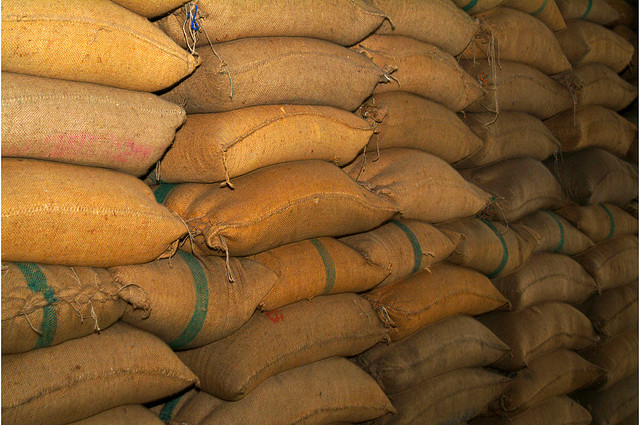Bag storage
 In most parts of Asia grain is stored in 40−80 kg bags made from either jute or woven plastic. Depending on the size of storage, these bags are normally formed into a stack.
In most parts of Asia grain is stored in 40−80 kg bags made from either jute or woven plastic. Depending on the size of storage, these bags are normally formed into a stack.
When using bag storage consideration needs to be given to the following:
- Jute bags should not be stacked higher than 4 m and plastic bags 3 m. Plastic bags are more slippery and the stacks will be less stable.
- Bags should be stacked under cover e.g. under a roof, in a shed or granary or under water proof tarpaulins.
- A one meter gap should be left between and around stacks and 1.5 m clearance between the top of the stack and the roof.
- Bags should be stacked on pallets or on an above ground structure to avoid the possibility of absorbing moisture from the floor.
- Bags should not be stacked on a bed of rice husks or bags filled with rice husks, as these are difficult to keep free from insect infestation.
- Bags should be stacked so that fumigation can be undertaken easily. The dimensions of the stacks should be set to facilitate sealing with a single fumigation sheet.
- The efficiency of bag storage can be improved if a hermetic plastic liner bag like the IRRI Super bag is used inside the existing storage bag especially for seeds but also for commerical rice.
Some farmers use bag storage in outside granaries, which have been constructed from timber or mud/cement or large woven bamboo or palm leaves.










